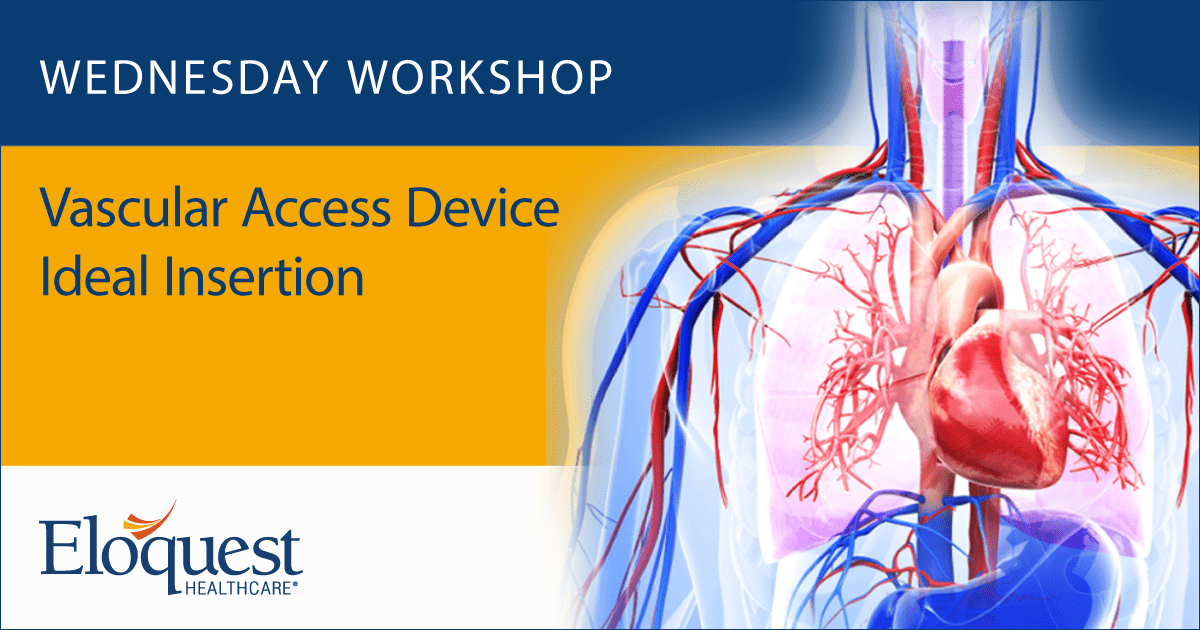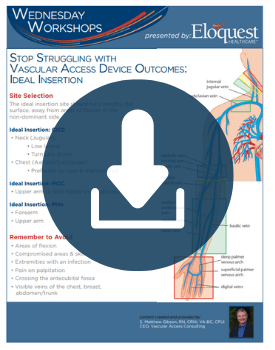
The 8th edition of The Infusion Nurses Society Infusion Therapy Standards of Practice (INS Standards) makes evidence-based practice recommendations to assist health care facilities in the standardization of their vascular access device and IV therapy practices. The INS Standards indicate that insertion site selection should be determined based on the prescribed infusion therapy plan while prioritizing vessel health and preservation. Vein and site selection occurs in collaboration with the health care team, the patient, and their caregiver(s). (Standard 27)1
Ideal VAD Insertion
The Zone Insertion Method2 (ZIM), a systematic approach initially designed to aid in the determination of the ideal insertion site for Peripherally Inserted Central Catheters (PICCs) has been applied to additional vascular access device types in recent years. ZIM combines known mechanisms for vascular access insertion site complications with a systematic process, to reduce risk factors and improve patient outcomes. A specific pattern of zones that present various risks and benefits for device insertion and management is revealed by utilizing musculoskeletal, skin and vessel characteristics that are separated into red, green and yellow zones.
This three-color system identifies the ideal insertion zones in green with the ideal site being a healthy, flat, surface, away from areas of flexion on the non-dominant side to promote patient self-care. Veins that are straight, compressible, have smooth vein walls, contain no echogenic material and are 3X larger than the catheter have proven to be optimal.
It’s important to note that yellow and red zones can be challenging due to joint motion with the red zones presenting the highest risk for complications.
Download the Ideal Insertion Resource for a one-page infographic outlining the zones of insertion.
For a more comprehensive review of how to improve Vascular Access Device Outcomes, watch our three-part Wednesday Workshop series, “Stop Struggling with Vascular Access Device Outcomes” presented by vascular access expert Matthew Gibson, RN, CRNI, VA-BC, CPUI. Each 20-minute presentation provides evidence-based actionable tips and resources aimed to improve practice and patient experiences.
Part 1: Ideal Insertion
Part 2: Superior Securement
Part 3: Mastering Maintenance
Eloquest Healthcare, Inc. can partner with your institution to facilitate a Vascular Access Device Site Assessment to determine the state of both dressing and skin integrity for patients in your facility, while providing you and your team with information on your facility’s infection risk, nurse efficiency, and product waste. Click HERE to request a Point Prevalence Assessment today!

References:
- Gorski, LA, Hadaway, L, Hagle, ME, et al. Infusion Therapy Standards of Practice. 8THJ Infus Nurs. Revised 2021.
- Robert B. Dawson; PICC Zone Insertion Method™ (ZIM™): A Systematic Approach to Determine the Ideal Insertion Site for PICCs in the Upper Arm. Journal of the Association for Vascular Access1 September 2011; 16 (3): 156–165. doi: https://doi.org/10.2309/java.16-3-5








